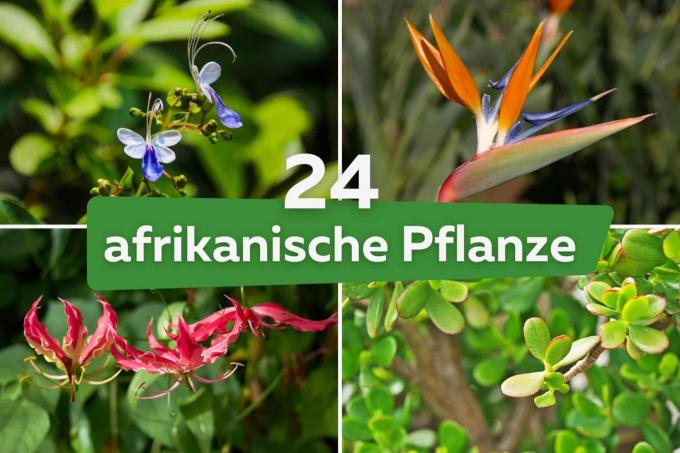
African plants offer a wide range of exotic varieties. Hobby gardeners as well as garden and balcony owners should find out about the 24 best and most popular specimens here.
In a nutshell
- Depending on the species, plants require sunny to semi-shady locations
- hardly any African plant hardy
- all specimens like warmth
Table of contents
- Indoor plants from A to E
- G to Z
- Terrace and balcony from A to G
- L to Z
- frequently asked Questions
Indoor plants from A to E
African Aloe (Aloe africana)
The African Aloe is the regular one aloe vera very similar, which is why it also needs at least three years until the first flower and also enjoys the fresh air in summer, provided the warm, sunny site conditions are ideal.
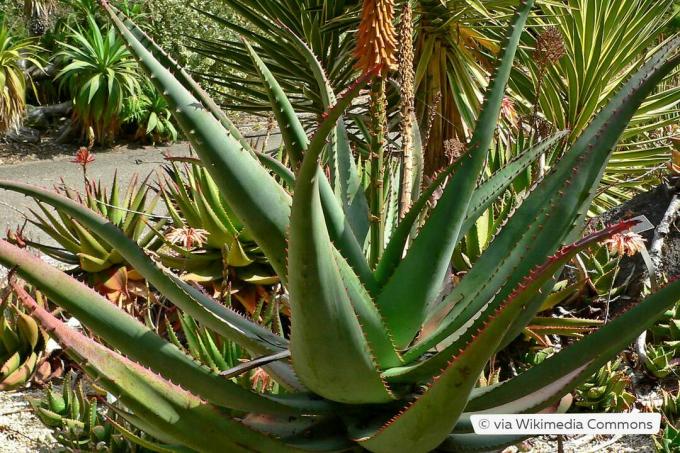
- Growth: Succulent-like, upright, sprawling, height of growth 120 to 300 cm
- Blossom: Inflorescences 60 to 80 cm high, racemes, tubular flowers, orange-red, February/March to May
African Violet (Streptocarpus saxorum)
The African violet is a perpetually flowering plant from Tanzania that also likes to spend the summer on the terrace or balcony.
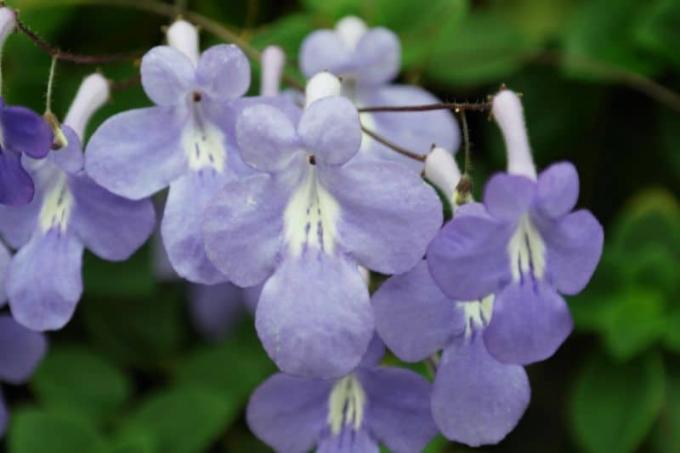
- Growth: hanging, upright, height of growth 50 to 100 cm
- Blossom: blue, lush, May to August/September
Arabica coffee (Coffee Arabica)
As an evergreen houseplant and potted plant, the Arabica coffee plant stays smaller while growing in the garden bed as a large shrub grows, which, however, has to be relocated to warmer winter quarters at the latest from eight degrees Celsius.

- Growth: upright, slightly spreading, growth height up to 200 cm
- Blossom: white, April to May
balloon pea (Sutherlandia frutescens)
The balloon pea is mainly at home in desert areas and is one of South Africa's best-known exotic species, considered to be moderately easy to care for Pot plant is very heat tolerant and bright in winter at temperatures around 12 degrees Celsius, best in the conservatory or in hallways hibernates.
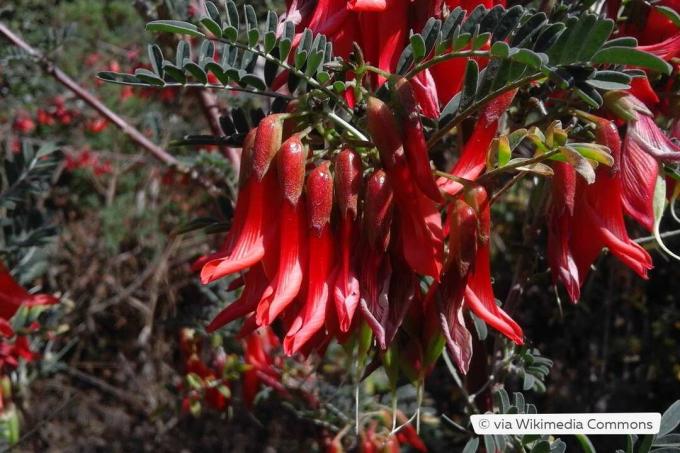
- Growth: heavily branched, evergreen or deciduous, perennial, height of growth up to 100 cm
- Blossom: orange, orange-red, June/July to September
triangle palm (dypsis decaryi)
Native to Madagascar, the triangle palm is an elegant indoor and winter garden plant that silver-colored feather fronds and at temperatures above 15 degrees Celsius likes to be in the garden bed together with the pot is set.
- Growth: upright trunk, spreading fronds, fast-growing, height as an indoor plant up to 600 cm, outdoors up to 1500 cm
- Blossom: white, rare in central European climate, July to August
Real papyrus (Cyprus papyrus)
The Real papyrus hails from Egypt and Sudan, but is now at home in all parts of Africa, which is why he is most comfortable as Indoor and winter garden plants feel, but as a moisture-loving specimen they also spend the summer on the banks of the pond can.

- Growth: fast-growing, upright, height 300 to 500 cm
- Blossom: white to yellowish, single, July to September
G to Z
lucky feather (Zamioculcas zamiifolia)
This is an enormously robust plant that forgives almost every care mistake and also goes by the name "lucky feather' found its way as a houseplant from the forests of East Africa to Central Europe, where it preferably in a semi-shady location at temperatures above 18 degrees Celsius to reveal their full beauty developed.

- Growth: slow-growing, upright, slightly funnel-shaped, forms rhizomes, height of growth 30 to 90 cm
- Blossom: very rare, inconspicuous, yellow to greenish, end of July to September
hibiscus (hibiscus)
The hibiscus is a classic among the African plants, one of the few specimens of the same Origin also hardy varieties for planting in the garden bed or overwintering in a tub on the balcony permitted.
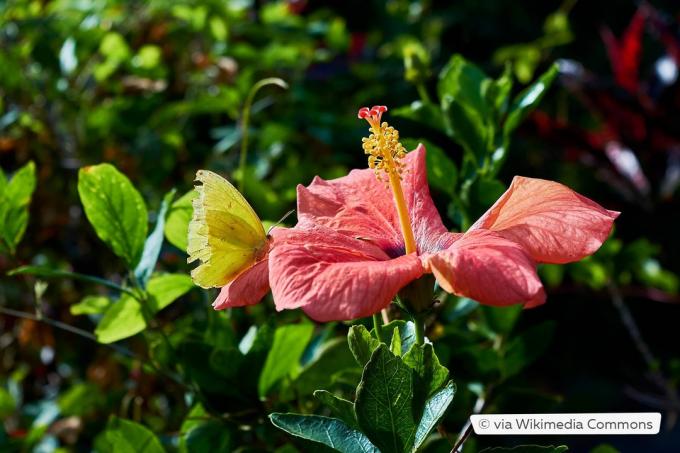
- Growth: upright-bushy, funnel-shaped, fast growing, growth height up to 300 cm
- Blossom: white, lilac, pink or multicolored, July to late September
pincushion (Leucospermum glabrum)
A real South African, exotic beauty is the pincushion, which owes its name to the appearance of the flowers and as popular outdoor indoor plant withstands temperatures down to 0 degrees Celsius for short periods, but overwinters brightly at 10 degrees Celsius should.
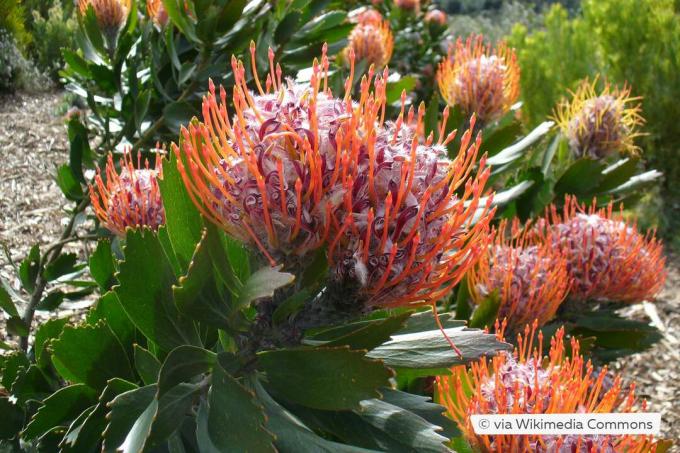
- Growth: hard-leaved, shrubby, partly creeping, height of growth up to 120 cm
- Blossom: dark red, densely filled flower balls, June to August
parrot flower (Strelitzia reginae)
The parrot flower, also known as the bird of paradise flower and the king's strelitzia, has a high growth rate during the flowering period decorative, exotic value and, in addition to cultivation indoors, is also a summery eye-catcher on balconies, terraces and in conservatories.

- Growth: Evergreen, clumps, upright, persistent, large leaves, height of growth 80 to 200 cm
- Blossom: yellow or orange, March to September
peacock flower (Dietes bicolor)
This specimen is originally from South Africa, shows a clear resemblance to the iris, is characterized by easy care and robustness and likes to spend the summer on the balcony and the Terrace.
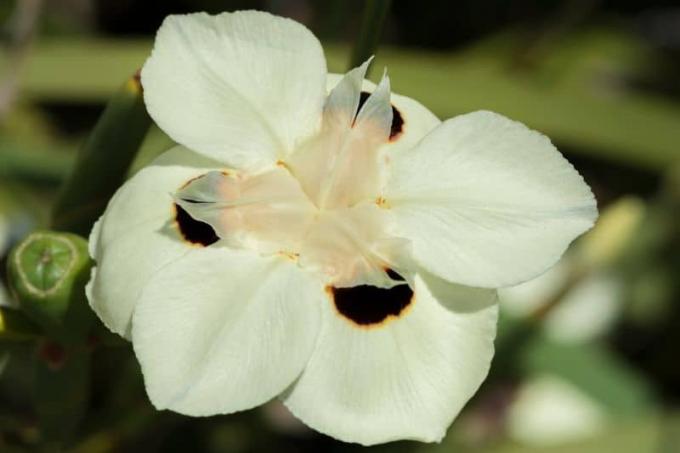
- Growth: Remains small, compact, evergreen, grass-like, up to 100 cm high
- Blossom: yellow-black (Dietes bicolor), violet-white (Dietes iridioides), each flower lasts only one day, continuous flowering between June and August due to lush flower formation
crown of glory (Gloriosa superba)
The crown of glory with petals in the shape of a crown, which copes well with drought, is an extravagant eye-catcher in the bucket Balconies and terraces are adorned and best with high humidity and constant temperatures between 17 and 22 degrees Celsius thrives.

- Growth: climbing, persistent, herbaceous, height of growth 150 to 200 cm
- Blossom: bright yellow-orange, June to August
Terrace and balcony from A to G
African baobab tree (Adansonia digitata)
The African baobab tree is considered one of the most resilient and robust trees in the world, originally comes from the African steppe and needs a large bucket, a rain-protected location and temperatures of around 20 degrees all year round Celsius.
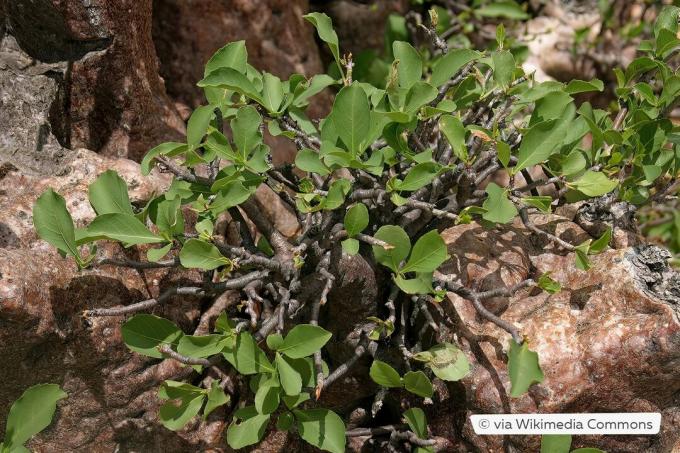
- Growth: Fast-growing, tree-like, up to 30 meters tall
- Blossom: white, creamy white, after five years at the earliest, May to June
A notice: The baobab tree is not exactly cheap to buy, but the investment is worth it in the long run view, as this unique woody plant can live for hundreds of years in ideal locations and with good care become.
African myrtle milkwort (Polygala myrtifolia)
This specimen from South Africa inspires with a lush sea of flowers and an extremely long flowering period even can stand outdoors in a sunny to partially shaded spot down to minus 4 degrees Celsius remain.
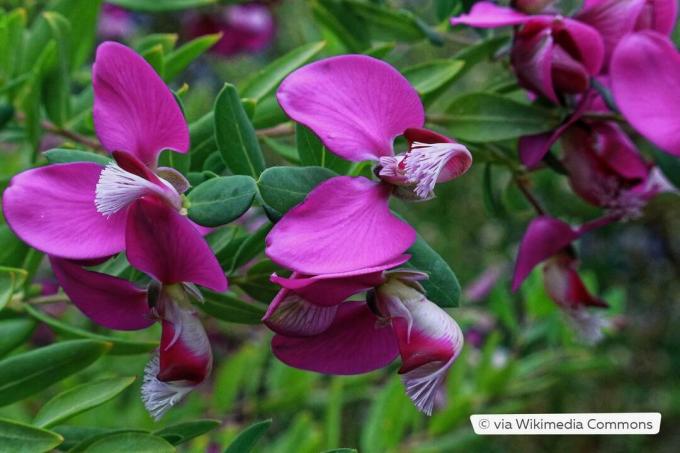
- Growth: shrubby, compact, evergreen, bushy, height of growth 100 to 250 cm
- Blossoms: bizarrely shaped, pink to purple, like grapes, March/April to September/October
African giant gourd (Lagenaria siceraria)
This exotic, sun-loving annual climber produces edible squashes in late fall, the shape of which gives this plant its nickname "bottle gourd."
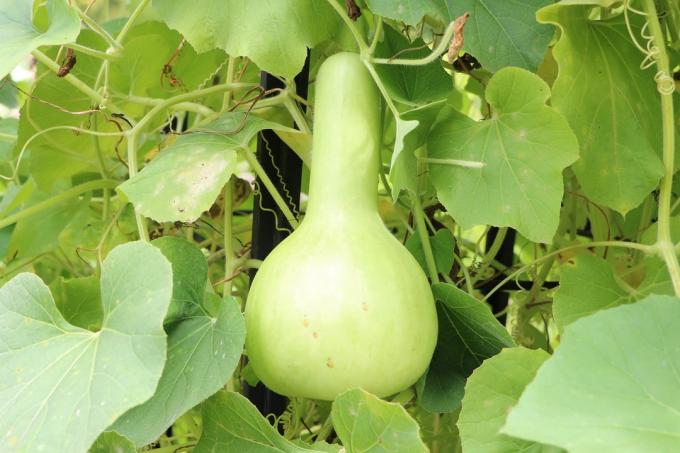
- Growth: climbing, fast-growing, dense, height of growth 400 to 600 cm
- Blossom: white, bell-shaped, June to August
African Tulip Tree (Spathodea campanulata)
This exotic originally comes from West Africa and is one of the most spectacular plants in Africa, which grows in the local climate has to move to warmer winter quarters from 5 degrees Celsius and a deep bucket because of its taproots needed.
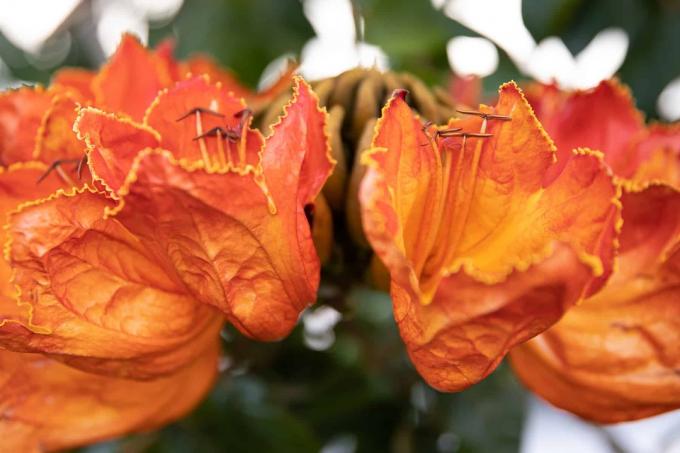
- Growth: Pyramid-shaped as a tree, semi-evergreen, 2 to 3.5 meters tall
- Blossom: bright orange to orange-red, palm-sized hemispheres, May to June from a minimum age of 20 years
flame tree (Delonix regia)
The flame tree comes from the tropical regions of Madagascar, enchanted by an enormous wealth of flowers, tolerates short-term temperatures of up to 3 degrees Celsius and hibernates brightly with temperatures around 20 degrees Celsius and relatively higher Humidity.
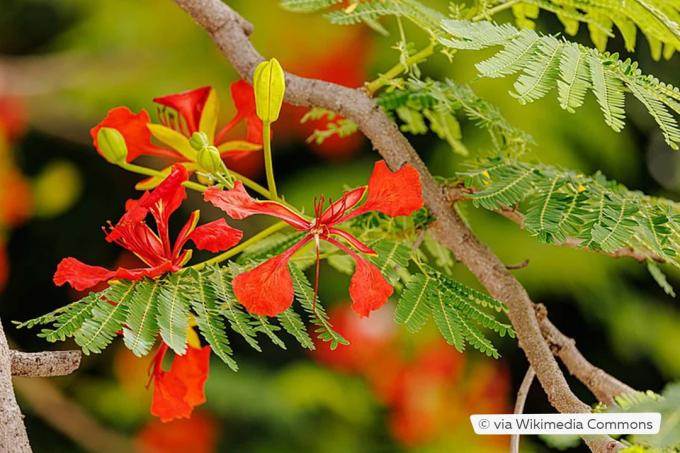
- Growth: strongly funnel-shaped, tree-like with a thick trunk, up to 10 meters high
- Blossom: after 6 years at the earliest, bright orange, funnel-shaped, racemose inflorescences, June to August
money tree (Crassula ovata)
The frost-sensitive money or penny tree is a succulent from the regions of Namibia to Natal, prefers sunny to partially shaded locations, tolerates heat as well drought well due to its high water storage capacity and can also be cultivated as a houseplant without any problems.
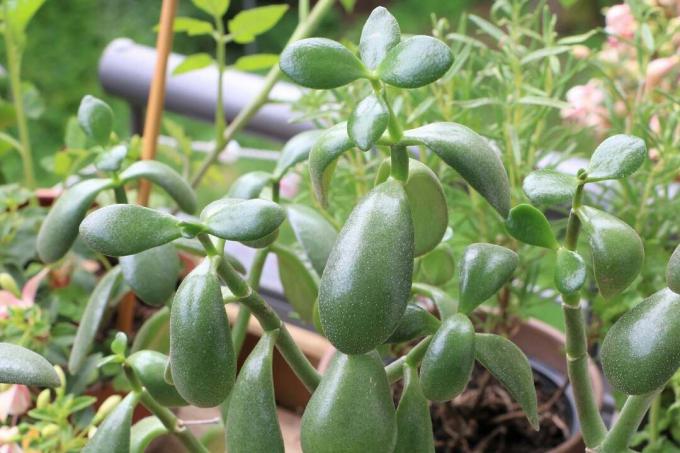
- Growth: erect, height 50 to 100 cm
- Blossom: white, April to July
L to Z
sausage tree (Kigelia africana)
The sausage tree is one of the strangest trees in the world with its sausage-like but poisonous fruits, spends the summer easily on sunny to half-shady balconies and terraces, but also likes a year-round location in the conservatory.
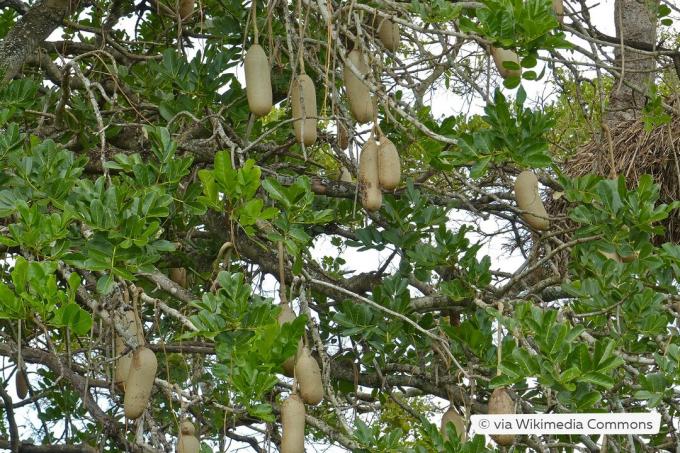
- Growth: loosely branched, broadly oval, very fast-growing, up to 18 meters high
- Blossom: Inflorescences arranged in panicles and racemes, up to 100 cm long, violet to dark red and bell-shaped flowers, only bloom at night during the summer months
South African coral shrub (Erythrina caffra)
Also known as a coastal coral shrub, this specimen comes from the Mozambique forests, all parts of the plant are highly poisonous for humans, but is very popular in full sun to sunny locations due to its lush flowering and decorative growth habit popular.
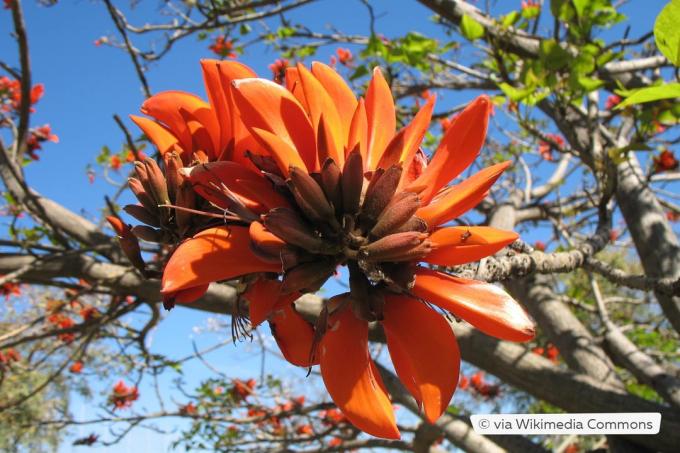
- Growth: shrubby to tree-like, deciduous, height of growth 180 to 300 cm
- Blossom: scarlet, July to September
butterfly lot tree (Clerodendrum ugandense)
The butterfly-free tree, also known as the blue-winged tree, presents itself as being enormously butterfly-friendly, with an imposing expression that enjoys the summer outdoors in a warm, semi-shady spot and hibernates brightly at temperatures between 10 and 15 degrees Celsius should.

- Growth: shrubby to tree-like, deciduous, height 50 to 150 cm
- Blossom: unicolored sky blue to blue or bicolored blue-white, March to October
Tip: The butterfly tree is also available as a climbing variant (Clerodendrum speciosum) with strong orange and red flowers, which grows densely and is therefore an ideal privacy screen on balconies and terraces represents.
cape mauve (Anisodontea capensis)
The frost-sensitive cape mallow is also called African mallow and dwarf hibiscus, comes from the South African Cape offers a lush sea of flowers and is used as tub and group planting as well as on balconies, terraces and in conservatories.
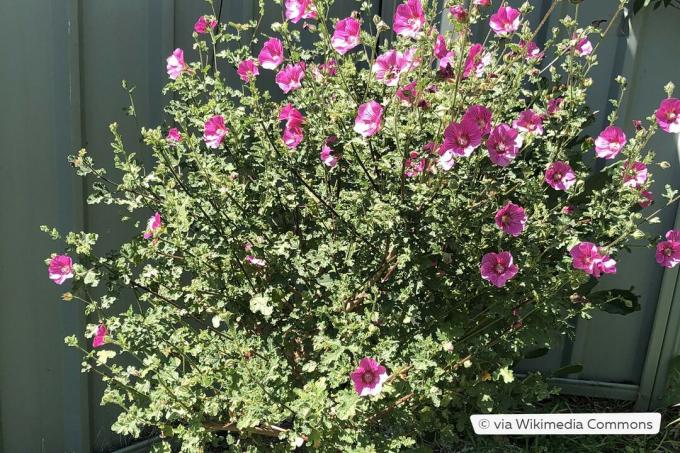
- Growth: shrubby, semi-evergreen, up to 100 cm high
- Blossom: pink, June and September
white stem palm (Ravenea rivularis)
The cold-sensitive white stem palm originally comes from Madagascar, has a powdery stem base in the first years of life, loves sunlight, but also tolerates partial shade and is actually one of the indoor and winter garden plants, but is increasingly used as a container plant to decorate patios and terraces balconies
- Growth: upright, overhanging, fast-growing, up to 300 cm tall
- Blossom: no
ornamental banana (Ensete ventricosum)
The homeland of the ornamental bananas, which are sensitive to the cold, extends from Ethiopia to the north of South Africa, where they thrive outside of the blazing sun and therefore also get a sun-protected location outdoors in Central Europe should.

- Growth: very fast-growing, upright to sprawling, large leaves, height of growth 150 to 400 cm
- Blossom: after six years at the earliest, yellowish
A notice: The Ensete ventricosum forms fruits from the flowers, but these inevitably die, so that this banana plant is purely an ornamental plant.
frequently asked Questions
Yes. However, it is important to note that they only germinate at higher temperatures. These are usually between 22 and 25 degrees Celsius, so pre-cultivation is advisable so that the plants can grow vigorously during the vegetation period.
They are generally drought tolerant, but some require relatively high humidity. With a few exceptions, they react sensitively to excessive moisture and do not tolerate dry heating air. They often only thrive in poor, nutrient-poor soil.
Yes. 'Zanzibar' basil or Egyptian basil (Ocimum basilicum), African rosemary (Eriocephalus africanus), African lemonwort (Satureja biflora), Karoo Mint (Mentha longifolia ssp.capensis) and Somalia Sage (Salvia somaliensis) are just a few examples of African herbs that are expanding the market has to offer.


